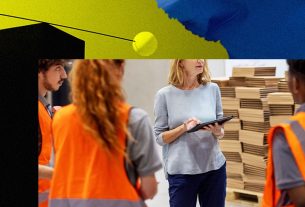LinkedIn’s upcoming addition of a games section to its platform signifies a new era of engagement and interaction within the career world. While this move aims to unlock fun and deepen relationships, it also raises important considerations regarding the connection between employees and their companies, potentially unhealthy competition, and the balance between digital fun and the real world.
Strengthening the Employee-Company Connection
The introduction of games on LinkedIn could strengthen the connection between employees and their companies. By incorporating leaderboards that rank companies based on employee scores, LinkedIn creates an opportunity for individuals to showcase their skills and achievements in a gamified context. This can foster a sense of pride and engagement among employees, as they contribute to their company’s overall ranking and reputation.
Additionally, the games section can encourage friendly competition and collaboration within organizations. Employees may engage with each other, discuss strategies, and work together to improve their collective scores. This collaborative spirit can enhance teamwork and camaraderie, leading to a more cohesive work environment.
Unintended Consequences: Unhealthy Competition and Manager-Employee Dynamics
While the gamification element on LinkedIn can have positive effects, it also carries the risk of unhealthy competition within organizations. If one employee consistently scores higher than their managers or colleagues in the games, it may create tension and adversely affect the working dynamics. This scenario can potentially lead to strained relationships, feelings of resentment, or even a sense of superiority among employees.
To mitigate these potential issues, organizations should foster a culture that emphasizes the broader value of collaboration and individual contributions beyond game scores. It is crucial to communicate that game rankings are not the sole measure of an employee’s worth or performance within the company. Emphasizing the importance of teamwork, professional growth, and achieving organizational goals can help maintain a healthy balance between healthy competition and overall employee well-being.
Digital Fun and the Real World
LinkedIn’s introduction of games represents another step towards integrating digital fun into the real world of professional networking and career development. While gamification can enhance engagement and interaction, it is essential to strike a balance between the virtual and physical realms.
Organizations and employees should be mindful of not letting the gamified experience overshadow the importance of real-world accomplishments, skills, and relationships. LinkedIn’s games section should be seen as an additional dimension of engagement, supplementing professional growth rather than replacing it. Encouraging employees to leverage the platform for networking, knowledge sharing, and career advancement beyond the games will help maintain a healthy perspective on the digital fun offered.
As LinkedIn embraces the future of gamification, organizations and employees alike must navigate these considerations to ensure a positive and productive professional environment. By harnessing the potential of games while maintaining a focus on real-world accomplishments, LinkedIn can continue to evolve as a valuable tool for career development and networking.


